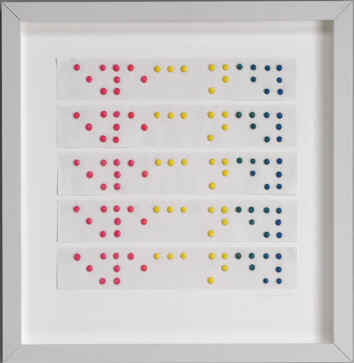From the studio mailbag: Joanne Mattera forwarded to me an email announcement from the New Museum (or, as they apparently like to be called, just "New Museum" without "the") an announcement about a special program at 231 Bowery innovatively called "Studio 231." The inaugural production in this "pop-up program" will be launched by Spartacus Chetwynd and her traveling band of amateur actors. This improbably-named and London-based artist will present
Spartacus Chetwynd: Home Made Tasers, an installation with performances and direct interactions with audiences.
 |
| Spartacus Chetwynd, image from Timothy Gaewsky's blog "Can You Dig It Too" (No indication of which one is the real Spartacus Chetwynd) |
Here's where it becomes pertinent, quoting from the announcement:
Spartacus Chetwynd
"uses the idea of bricolage as a physical practice as well as the organizing principle to bring together the disparate images and characters within her work."
(Read the announcement for yourself
here.)
OK, it's true that "bricolage" has many meanings and that the definition I use in this blog's heading is just one of many. It basically means that you take found or recycled whatevers and combine them into something. This very loose definition applies to music, architecture, cultural studies, philosophy, biology, education, information technology, popular culture, and you name it. Just see the Wikipedia
entry for the list of examples. You will be amazed.
That being said, I seem to see the word used much more frequently in connection with art recently (probably because I keep saying it) and I think it's the start of a trend.
Citations to Support My Contention
 |
| Ted Larsen, Strange Offsets, 2009, 15" x 5" |
For example, one of my favorite contemporary artists,
Ted Larsen, says in his statement that he is "constructing
bricolage works in order to re-purpose the materials and re-identify their meanings: to re-contextualize and re-label the idea of Ready-mades." [my emphasis] Ted's work is made from metal that he cuts from junked cars. I wrote about Larsen in Art in the Studio
last year when he showed at the Clark Gallery in Lincoln, Mass., and at that time his statement did not use the word "bricolage" to describe his work.
 |
| Mark Bradford, Strawberry, 2002, 72" x 84" |
Another artist whose work can be described as bricolage is Mark Bradford, whom I have written about in Art in the Studio
here when he showed at the Boston ICA. When I Googled "Mark Bradford + bricolage," I turned up an
article headed "Bricolage: Visual Artist As Social Multitude (Mark Bradford in Chicago)" by Chicago Art Magazine of May 31, 2011. While I would certainly describe Bradford's work as bricolage, since he works with found posters and other papers, I am not sure if the "bricolage" of the article's title is referring to Bradford's work or to the social interaction of The Mark Bradford Project in which Bradford connects with "different Chicago communities to interact around the creative process....[and] serves as a catalyst for community engagement projects and ongoing discussion." It could be either one according to the dictionary definition of bricolage.
 |
| A sample Twitter trends map (not the one for Bricolage) |
Here's something else: the Twitter
trend for "bricolage." (Here's the
map for the trend.) I am a non-tweeter, but apparently that's the number of times this word appears in tweets. It looks like most of the tweets are in French, but many in English refer to Bricolage Theater Company in Pittsburgh.
Here's their link. This is home to the Bricolage Production Company, founded in 2001 by Jeffrey Carpenter, who chose the name "based largely on the environmental philosophy of Claude Levi Strauss, who used the term "bricolage to mean 'the innovative use of what's at hand.'" So now we come around full circle with "bricolage" being applied to theatre companies.
Call for Info
If you have seen other examples of the word
bricolage being used, please comment to let me know. I would be interested in hearing about it. Am I right that it is becoming a new buzzword?



















































































